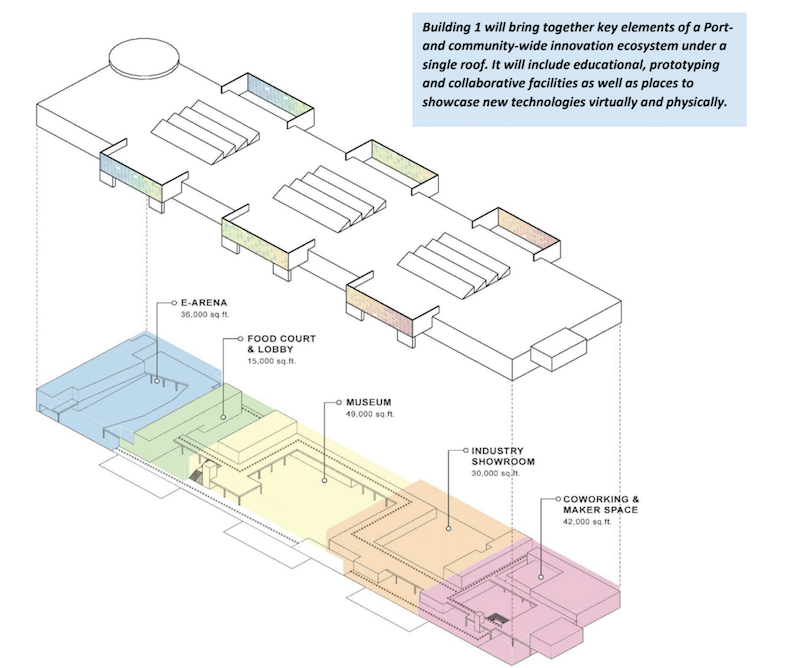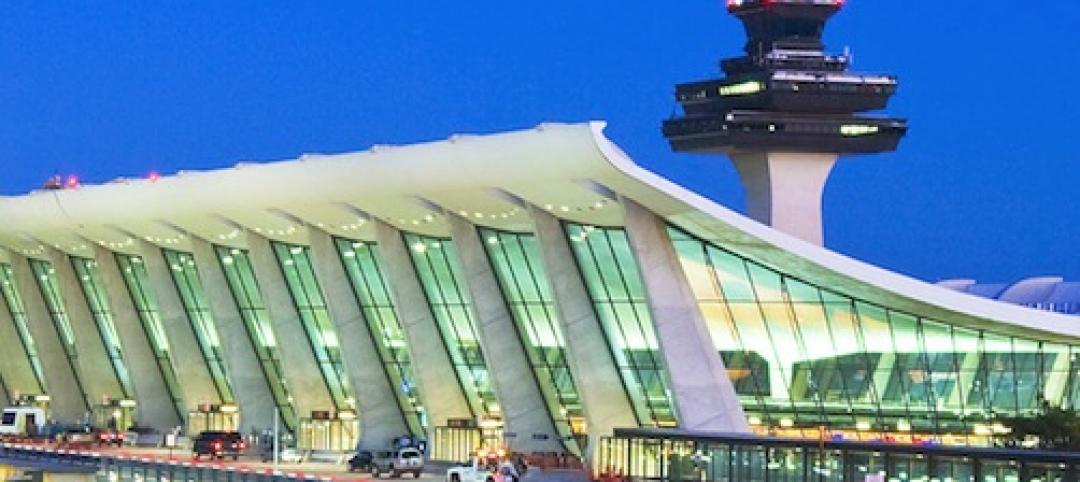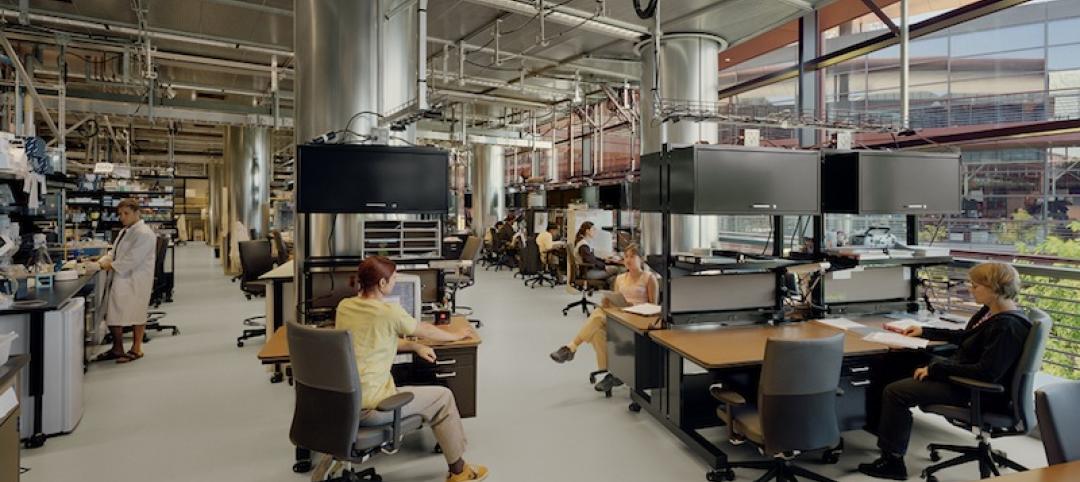The 1,900-acre Port San Antonio campus, immediately south of the country’s seventh-largest city’s downtown, is home to over 80 public- and private-sector companies and 13,000-plus workers in such fields as aerospace, defense, cybersecurity, robotics, and advanced manufacturing. The campus’ annual economic impact exceeds $5 billion.
In 2015, the Port—located at the former Kelly Air Force Base, which closed in 2001—revealed plans to focus its economic development on the goal of creating 5,000 new jobs by 2020. On February 27, the Port’s Board of Directors authorized its CEO Jim Perschback to negotiate development plans with American Triple I Partners to advance its strategic objectives.
The goal is to “leverage our Port’s unique platform and partnerships to physically and virtually connect the region’s large and well-established nature industries with the region’s innovators, and facilitate commerce and collaboration between then—leading to the development of new technologies that also have applications on a national and global scale and, as a result, drive regional economic growth,” reads the “Tech Port San Antonio” proposal that Port San Antonio presented last month.
The initial phases of the predevelopment agreement would support recent expansions by a growing number of cybersecurity firms moving onto the Port’s campus.

Port San Antonio would convert and enlarge a 130,000-sf industrial facility on its campus for an innovation center and office space for cybersecurity and defense tenants. It would also like to add a space for industrial fabrication. Image: Port San Antonio
The Port is considering a fitout of an existing flexible 130,000-sf industrial facility for an Interim Innovation Showroom and Education Center. The building—which could be expanded to 200,000 sf with the addition of a second floor—would include on its first floor a 36,000-sf 1,500-seat-capacity Technology Arena, a 49,000-sf expansion of the San Antonio Museum of Science and Technology, a 30,000-sf Industry Showroom, and 42,000 sf of coworking and maker spaces.
The predevelopment agreement also envisions150,000-sf of cybersecurity offices for a Security Operations Center, and shared/rentable space for commercial and defense operations, built to meet Sensitive Compartmented Information Facilities (SCIF) standards.
The first building of the complex is already nearly fully leased by cybersecurity company tenants such as CNF Technologies and Lockheed Martin

Improvements in one building on campus would add an arena, museum, and coworking space. Image: Port San Antonio
The predevelopment agreement foresees the creation, by 2021, of a 120,000-sf industrial fabrication and laboratory space with about 15,000 sf for open and segmented offices. The remaining, divisible space would offer multiple bays ranging from 20,000 to 50,000 sf. The Port suggests that this building could be located to provide tenants and users with access to the Port’s industrial airport.
The Port plans to pursue the establishment of an “Other Transaction Authority” to facilitate the commercialization of technologies developed through the innovation center and regional innovators, and to provide the government with rapid access to R&D and prototyping.
America Triple I Partners is a New York-based investment advisor focused on infrastructure private equity. Its Chairman and Co-CIO is Henry Cisneros, the former San Antonio mayor who under President Clinton was Secretary of the U.S. Department of Housing and Urban Development He also cofounded CityView, an investment management and development firm dedicated to urban living. American Triple I Partners is affiliated with the investment bank Siebart Cisneros Shank & Co. Its team includes William Thompson, who for eight years was New York City’s Comptroller.
Sundt Infrastructure Development is expected to support the investment group during predevelopment.
Following a 120-day predevelopment period established by the memorandum of understanding, during which additional design and feasibility research will be conducted, the Port and Triple I could formalize separate agreements for phased construction of the two projects.
Related Stories
| Apr 30, 2013
Tips for designing with fire rated glass - AIA/CES course
Kate Steel of Steel Consulting Services offers tips and advice for choosing the correct code-compliant glazing product for every fire-rated application. This BD+C University class is worth 1.0 AIA LU/HSW.
| Apr 24, 2013
Los Angeles may add cool roofs to its building code
Los Angeles Mayor Antonio Villaraigosa wants cool roofs added to the city’s building code. He is also asking the Department of Water and Power (LADWP) to create incentives that make it financially attractive for homeowners to install cool roofs.
| Apr 5, 2013
Lack of national standards on design of bioterror labs creates higher risk for accidents, panel says
U.S. labs that conduct research on bioterror germs such as anthrax are at risk for accidents because they do not have uniform design and operation standards, according to a Congressional investigative group.
| Apr 3, 2013
5 award-winning modular buildings
The Modular Building Institute recently revealed the winners of its annual Awards of Distinction contest. There were 42 winners in all across six categories. Here are five projects that caught our eye.
| Mar 29, 2013
PBS broadcast to highlight '10 Buildings That Changed America'
WTTW Chicago, in partnership with the Society of Architectural Historians, has produced "10 Builidngs That Changed America," a TV show set to air May 12 on PBS.
| Mar 27, 2013
RSMeans cost comparisons: college labs, classrooms, residence halls, student unions
Construction market analysts from RSMeans offer construction costs per square foot for four building types across 25 metro markets.
| Mar 24, 2013
World's tallest data center opens in New York
Sabey Data Center Properties last week celebrated the completion of the first phase of an adaptive reuse project that will transform the 32-story Verizon Building in Manhattan into a data center facility. When the project is completed, it will be the world's tallest data center.
Building Enclosure Systems | Mar 13, 2013
5 novel architectural applications for metal mesh screen systems
From folding façades to colorful LED displays, these fantastical projects show off the architectural possibilities of wire mesh and perforated metal panel technology.
| Feb 26, 2013
Tax incentive database for reflective roofs available
The Roof Coatings Manufacturers Association (RCMA) and the Database of State Incentives for Renewables & Efficiency (DSIRE) created a database of current information on rebates and tax credits for installing reflective roofs.














